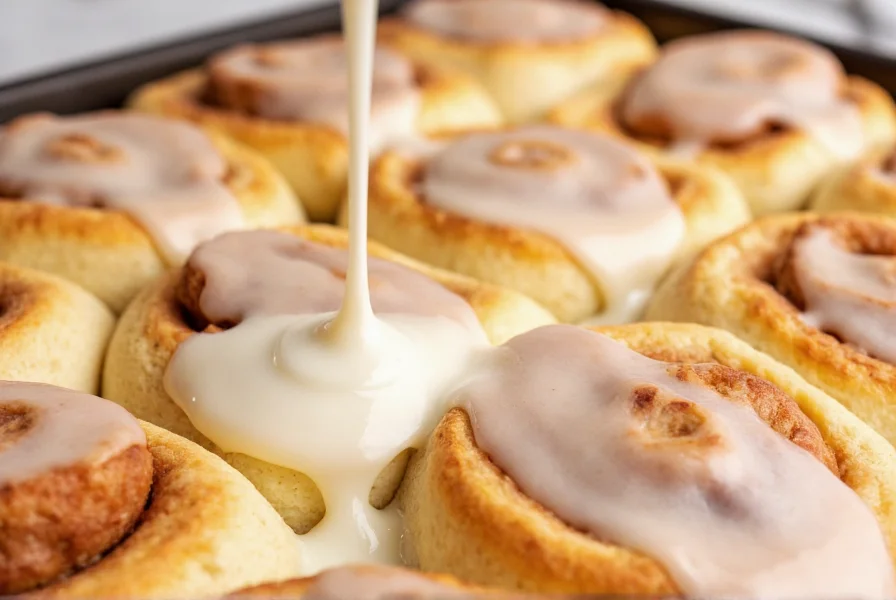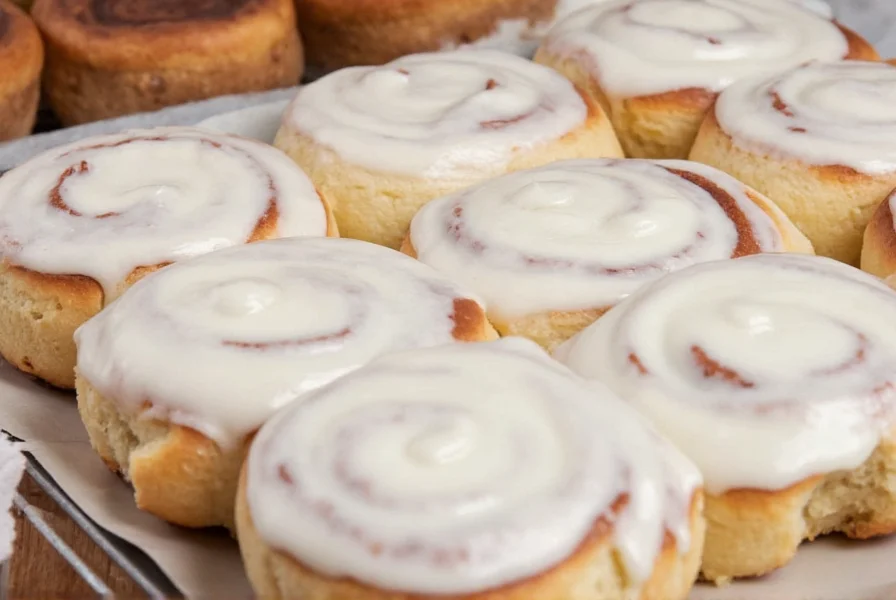Creating the perfect icing for cinnamon rolls transforms good pastries into extraordinary treats. This classic cream cheese-free frosting delivers that signature sweet finish bakers and families love. Whether you're making homemade cinnamon rolls from scratch or using store-bought dough, this versatile icing recipe works flawlessly every time.
Essential Ingredients for Perfect Cinnamon Roll Icing
The magic of traditional cinnamon roll icing lies in its simplicity. You only need four basic pantry staples:
| Ingredient | Measurement | Function |
|---|---|---|
| Powdered sugar (confectioners' sugar) | 2 cups | Creates smooth, melt-in-your-mouth texture |
| Milk or half-and-half | 2-3 tablespoons | Adjusts consistency without thinning flavor |
| Unsalted butter, softened | 2 tablespoons | Adds richness and prevents sugar crystallization |
| Pure vanilla extract | 1 teaspoon | Enhances sweetness and adds depth of flavor |
For best results, use fresh ingredients. Old powdered sugar often contains cornstarch that can make your icing gritty. Room temperature butter incorporates more smoothly than cold butter, creating that signature velvety texture professional bakeries achieve.

Step-by-Step Icing Preparation
Follow these simple steps for flawless cinnamon roll frosting every time:
- Prepare ingredients - Measure powdered sugar into a medium bowl. Soften butter to room temperature (about 30 minutes at room temperature).
- Cream butter - Using a hand mixer or whisk, beat softened butter until smooth and creamy (about 1 minute).
- Incorporate sugar - Gradually add powdered sugar while mixing on low speed to prevent sugar clouds.
- Add liquid - Mix in vanilla extract and 2 tablespoons milk. Beat for 1-2 minutes until completely smooth.
- Adjust consistency - Add additional milk (½ tablespoon at a time) if too thick, or more powdered sugar if too thin.
- Apply immediately - Spread over warm cinnamon rolls using an offset spatula or piping bag.
Popular Icing Variations to Try
While the classic recipe satisfies most palates, these easy modifications create distinctive flavors:
- Cream cheese icing - Add 2 ounces softened cream cheese for tangy richness (ideal for how to make cream cheese icing for cinnamon rolls from scratch)
- Lemon glaze - Replace milk with fresh lemon juice and add 1 tablespoon zest
- Brown sugar icing - Substitute ¼ cup powdered sugar with light brown sugar for caramel notes
- Maple frosting - Replace vanilla with 1 tablespoon pure maple syrup
Troubleshooting Common Icing Problems
Even experienced bakers encounter icing issues. Here's how to fix them:
- Runny icing - Caused by too much liquid. Fix by adding 2-4 tablespoons additional powdered sugar until desired thickness.
- Grainy texture - Usually from old powdered sugar or insufficient mixing. Whip for 2-3 additional minutes or strain through fine mesh sieve.
- Icing sets too quickly - Work with smaller batches and keep remaining mixture covered with damp cloth.
- Icing doesn't stick - Apply to warm (not hot) rolls. Cold rolls cause icing to slide off.
Pro Tips for Perfect Cinnamon Roll Frosting
Professional bakers use these techniques to elevate their best icing for homemade cinnamon rolls:
- Temperature matters - Apply icing when rolls are warm (about 120°F/50°C), not piping hot
- Consistency control - For drizzle effect, make slightly thinner; for spreadable frosting, keep thicker
- Flavor enhancement - Add pinch of salt to balance sweetness
- Application technique - Use offset spatula for even coverage without tearing delicate rolls
Storage and Serving Recommendations
For optimal freshness and texture:
- Consume iced rolls within 24 hours for best quality
- Store leftovers in airtight container at room temperature
- Revive day-old rolls by warming in 300°F (150°C) oven for 5 minutes before serving
- Make icing fresh when possible - it doesn't store well for more than 2 hours
Frequently Asked Questions
Can I make cinnamon roll icing without milk?
Yes, you can substitute milk with water, almond milk, or even the liquid from canned coconut milk. For richer texture without dairy, use 1-2 tablespoons melted coconut oil instead of some of the liquid component.
Why does my cinnamon roll icing get hard?
Icing hardens when too much powdered sugar is used or when exposed to air for extended periods. To prevent hardening, add ½ teaspoon light corn syrup to your recipe, which maintains flexibility. Always store iced rolls covered at room temperature rather than refrigerating.
How do I make my icing shiny and glossy?
For glossy icing, increase the liquid component slightly and add 1 teaspoon light corn syrup. The corn syrup creates surface tension that produces that professional bakery shine. Apply while rolls are still warm for maximum gloss effect.
When should I put icing on cinnamon rolls?
Apply icing when rolls are warm but not hot - approximately 5-10 minutes after removing from the oven. Rolls that are too hot will melt the icing, causing it to soak in excessively. Rolls that are completely cooled will cause icing to harden on the surface rather than absorbing properly.
Can I make this icing ahead of time?
While best made fresh, you can prepare icing up to 2 hours ahead. Store in an airtight container with plastic wrap pressed directly on the surface to prevent crusting. If it thickens, whisk in additional milk (½ teaspoon at a time) to restore proper consistency before using.











 浙公网安备
33010002000092号
浙公网安备
33010002000092号 浙B2-20120091-4
浙B2-20120091-4